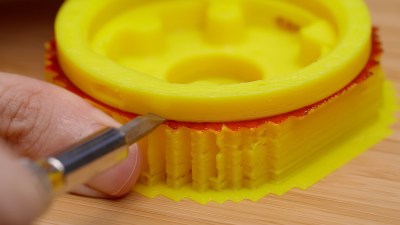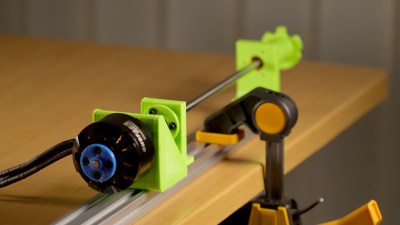Sheet metal is very easy to form, including the pressing in of intricate shapes with dies and a hydraulic press, but the dies themselves are slightly harder to come by. What if we could 3D print custom dies to stamp logos and more into sheet metal? This is the premise of a recent video by the Stick Shift Garage channel on YouTube in which dies are printed in PLA+ (solid infill) and used to stamp 1 and 2 mm thick sheet metal with the channel’s logo.
As can be observed in the video, the results aren’t bad at all after a couple of tweaks and adjustments to the pressure, but of course there is room for improvement. Some helpful commentators suggest improving the dies with properly rounded edges on the die’s shape and paying attention to K-factors and kin so as not to overstress or tear the sheet metal. In terms of die longevity, the PLA+ dies began to wear out after about a dozen tries but not the point of failure. Here other filament types might work even better, maybe even to the point of competing with a CNCed metal die.
Considering that this was a first attempt without a lot of pre-existing knowledge it went pretty well, and a future video was promised in which improvements will be shown off.





















